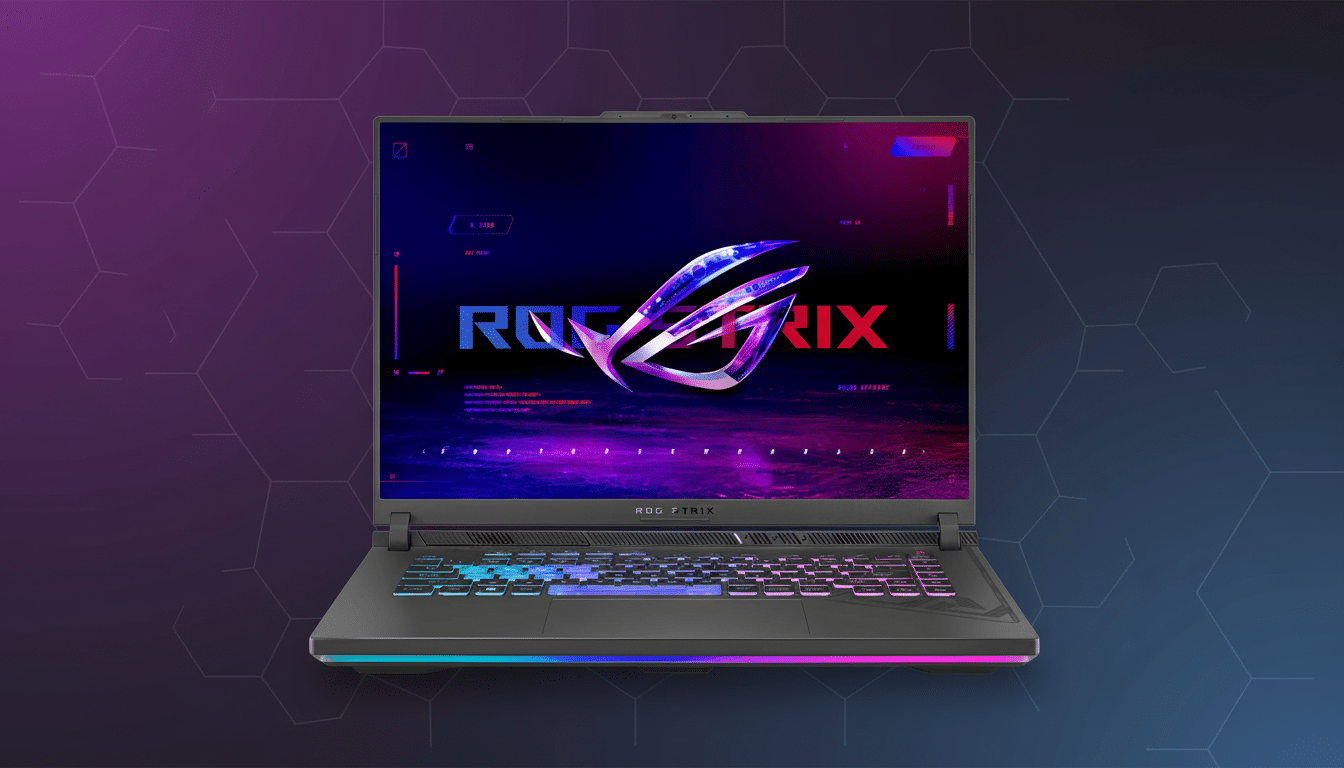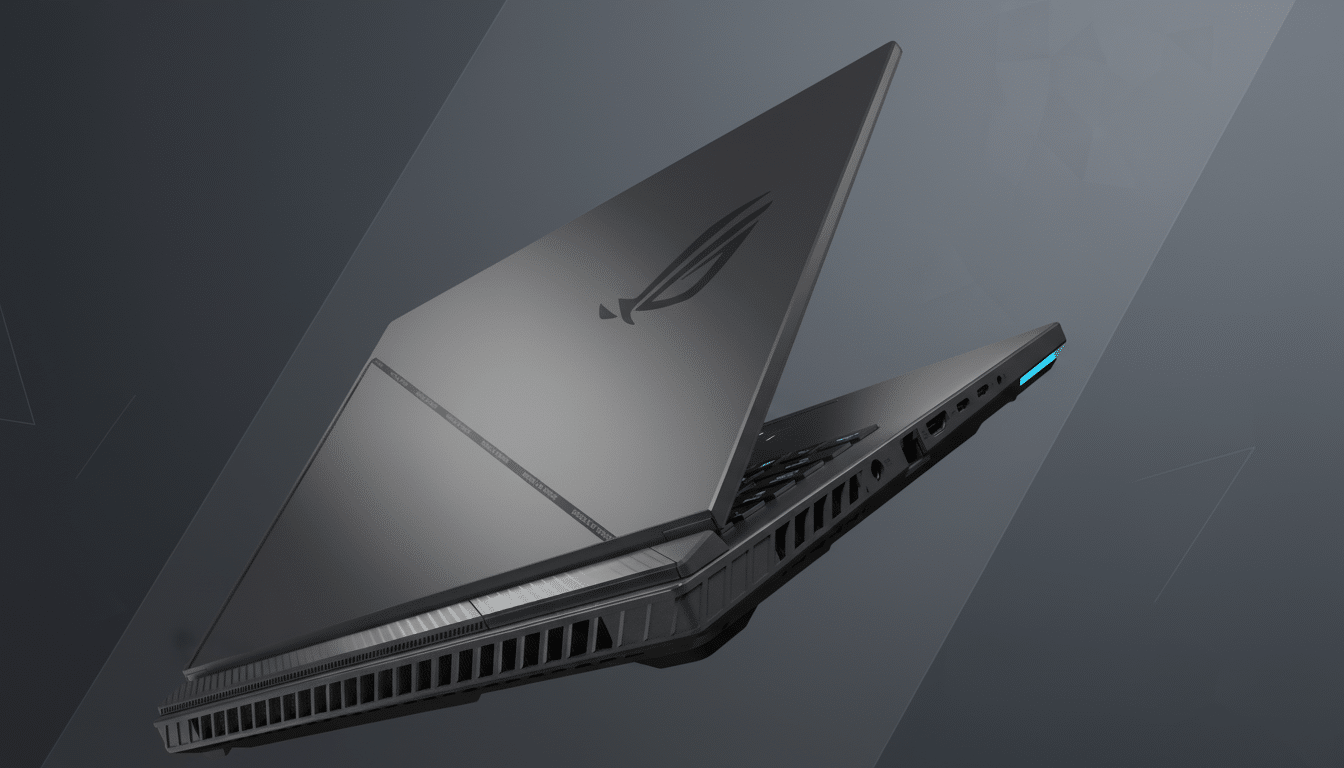The calculus changes, though, when a known gaming notebook slides to $1,199 and shaves $300 off its usual tag. This Asus ROG Strix G16 at this price point is not just another deal carousel entry—it’s a carefully put-together machine that beats most of its competition in the same weight class, and it makes you ask a real question: do you really need to look any further?
What you get with this Asus ROG Strix G16 build
This model pairs Intel’s Core i7‑14650HX with Nvidia’s GeForce RTX 5060, 16GB of DDR5 memory, and a 1TB SSD. The display is a 16-inch FHD panel at a 165Hz refresh rate and roughly 300 nits on the spec sheet, enough to suit fast play rather than HDR cinematics. Asus’ tri‑fan cooling, full‑width vapor chamber, and liquid metal TIM round out the thermal package that’s been built to keep clocks steady when the GPU is doing something other than idling.
- What you get with this Asus ROG Strix G16 build
- How this ROG Strix G16 compares with similarly priced rivals
- Real-world performance and thermals you can actually feel
- Who should buy this configuration and who should skip it
- Deal timing, pricing cycles, and what to expect next
- Verdict: why this $1,199 ROG Strix G16 is a strong value

For all intents and purposes, that means esports titles including Valorant, Apex Legends, and Counter‑Strike will crest over the triple-digit barrier at 1080p.
Heavier games—Baldur’s Gate 3, Cyberpunk 2077, or Star Wars Jedi: Survivor—should feel right at home on high with upscaling enabled. UL’s 3DMark is still an effective stand-in here: systems with similar silicon keep showing enough free headroom for high-refresh FHD gaming without overly compromising on settings.
How this ROG Strix G16 compares with similarly priced rivals
For around $1,200 it’s generally between Acer’s Nitro 16, Lenovo’s Legion 5 or 7, HP’s Omen 16, and MSI’s Katana or Thin lines. That mix of lines line up on paper, but they diverge in cooling design, long-term performance, and panel quality. (On independent tests from places like Notebookcheck or Tom’s Hardware, the Strix G16’s thermal strategy—vapor chamber plus tri‑fan—is part of a tier that in general throttles less under long loads.)
The display choice is deliberate. Many rivals woo with higher resolutions at the same price, but a crisp 165Hz FHD panel keeps GPU requirements modest and frame rates high. This corresponds with actual PC usage; according to the Steam Hardware Survey, 1080p is still the most popular gaming resolution on PC, and as such this configuration makes sense for the silicon within.
Real-world performance and thermals you can actually feel
Thermals aren’t marketing fluff; they’re what determines whether that new GPU is going to hold those boost clocks in the middle of a raid. We’ve seen the likes of Asus put liquid metal on performance CPUs in a number of its previous generations, and, when combined with the increased surface area for heat dissipation, it’s crucial for keeping throughput during long 30‑minute stress runs (precisely the time at which thinner designs start to droop). For content creators, that stability will be felt in the timeline as quicker exports and more consistently during effect previews.

The ~300‑nit ceiling of the panel is a compromise to be aware of. Indoors is great; outside or near bay windows, less so. The 165Hz FHD IPS panels get average sRGB full coverage in third-party reviews, so it’s good enough for web work and YouTube. If you’re living in the DCI‑P3 color space or you need to do HDR mastering, then you’ll want a different class of display.
Who should buy this configuration and who should skip it
Get it if you care more about reaching competitive frame rates, being a workhorse with strong sustained performance, and having a chassis that’ll stay cool after hourslong sessions than about having an SSD all the time. There’s a generous 1TB of SSD storage, which is capacious enough for a contemporary rotation of big games, and 16GB RAM provides the practical baseline these days for such titles and an easy upgrade path to 32GB further down the line.
Skip or continue on if you want a QHD or 240Hz‑plus panel, a color‑accurate screen for professional grading work, or ultra‑long battery life away from outlets. Also look for alternatives if you need 32GB of memory out of the box (and don’t want to upgrade).
Deal timing, pricing cycles, and what to expect next
Gaming laptop prices vary with promotional cycles and component costs. IDC market watchers have observed that the average PC selling price is not immune to supply chain and logistics pressures, and TrendForce monitors memory pricing that has an influence on BOM costs either up or down. Translation: sales of $200 to $400 pop up, but they may not last. If this spec sheet is what you’re shopping for, waiting a little longer might mean watching it disappear—or return at a higher baseline.
There’s also the demand side of the equation to take into account. Big releases encourage upgrades, and spikes in GPU‑leaning features such as ray tracing and frame rates can narrow the window for the best deals. Purchasing at the low point of a sale window typically trumps waiting for that perfect price, which never comes.
Verdict: why this $1,199 ROG Strix G16 is a strong value
Is there another gaming laptop you should be looking at while this one is $300 off? Assuming you have certain needs that this build doesn’t meet. But for most of those gamers, aiming at high‑refresh 1080p play, the $1,199 ROG Strix G16 hits a sweet spot: fast where it needs to be, cooled to keep it there, and priced below competing machines with much the same gear on board. In a crowded market of near‑sleepers, this is the rare bargain that can help you make up your mind.

